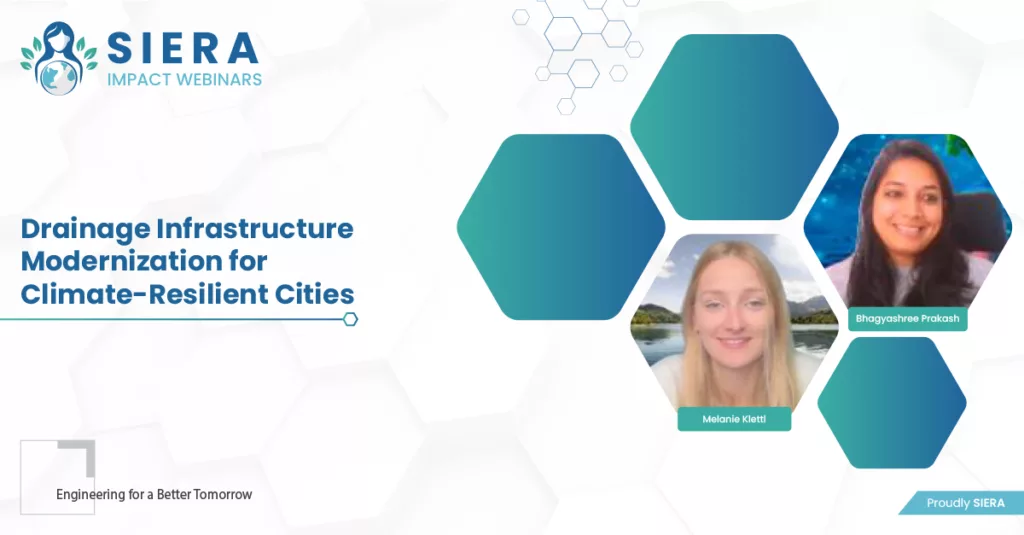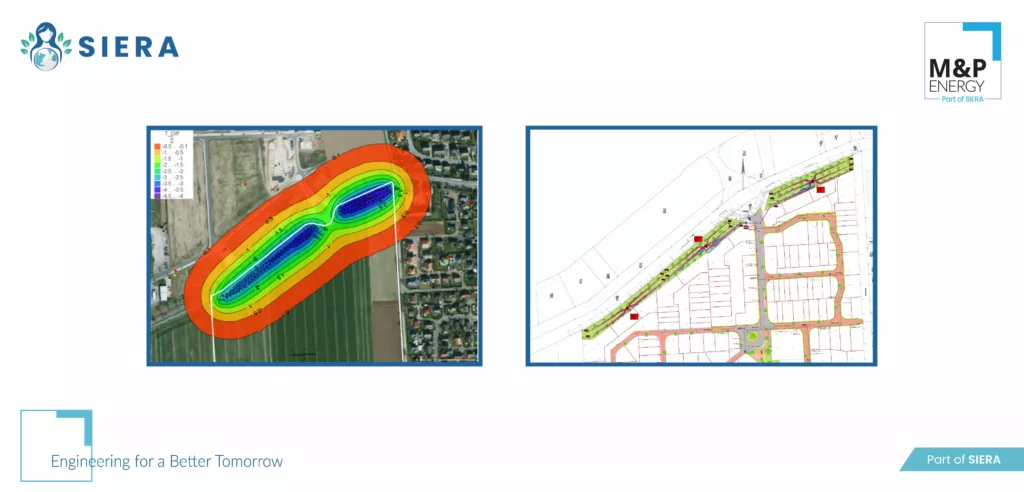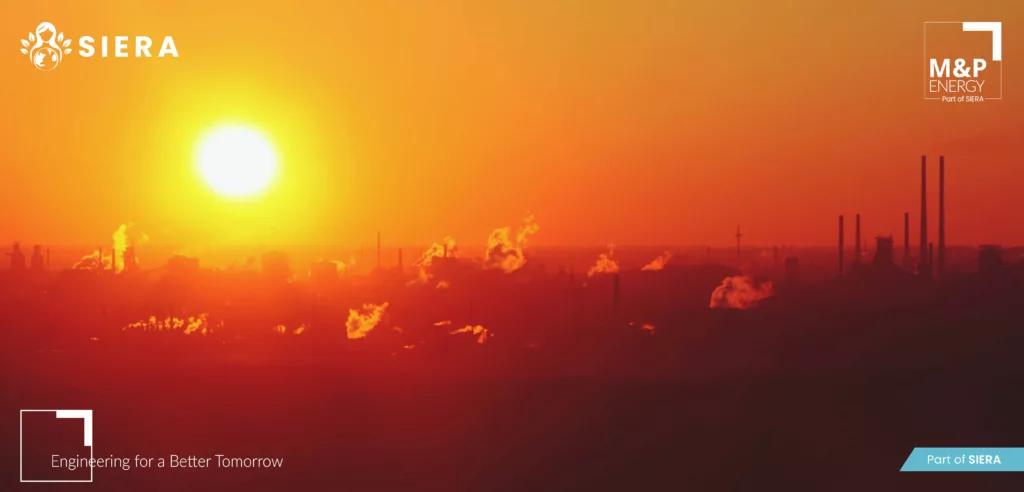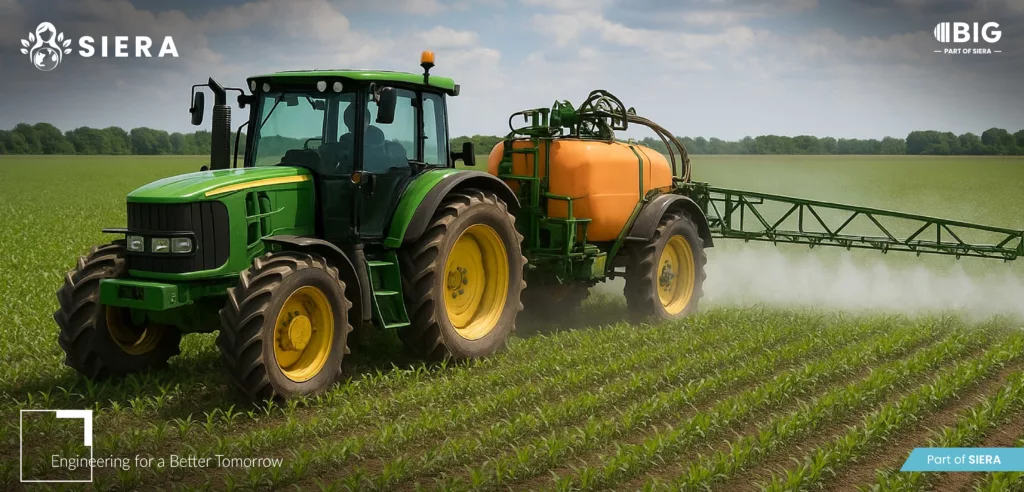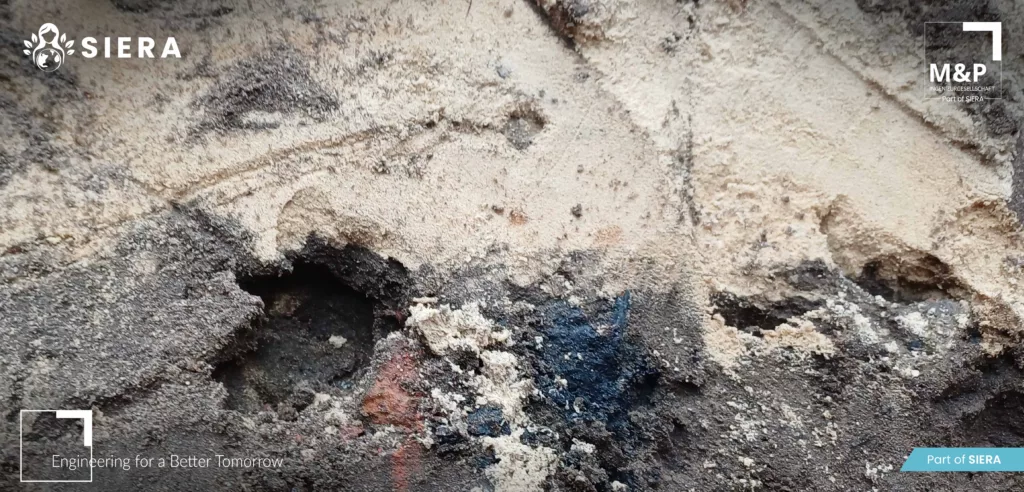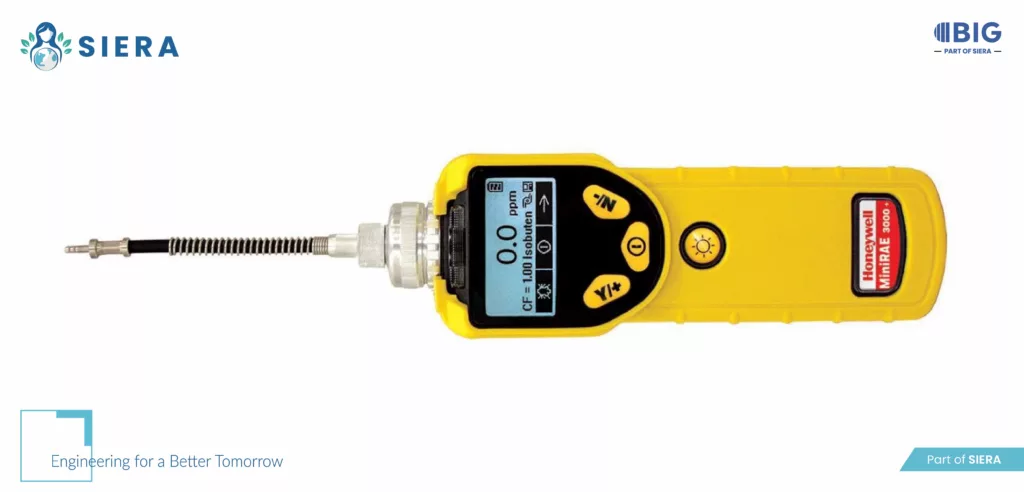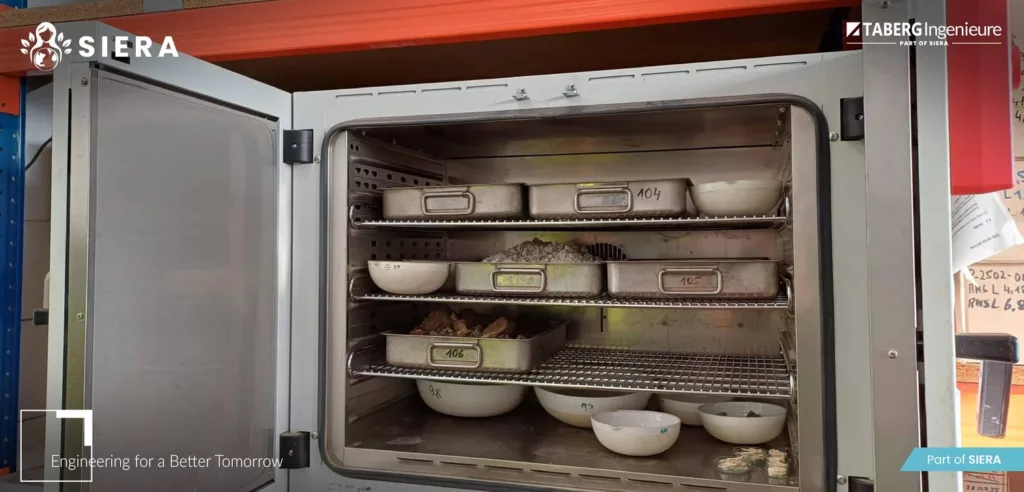Introduction
Cities are densifying while storms hit harder and faster. This SIERA Impact Webinar unpacked how to modernize drainage—shifting from “move water fast” to manage quantity and quality, comply with EU rules, and build circular, resilient systems.
The SIERA Alliance unites engineering, software, and finance expertise to deliver end-to-end sustainability solutions—from technical design and permitting through monitoring, reporting, and financing. Within the Alliance, firms such as Taberg Ingenieure GmbH, Tucher & Partner Ingenieure, M&P Project, and BIG bring deep engineering and delivery capabilities, complemented by our software and finance teams that streamline compliance and capital. Through the SIERA Academy, we extend this impact in collaboration with partners like EUTECH—powered by SIERA.
Key takeaways
Modern drainage must handle peak attenuation and first-flush pollution together—backed by evidence, instrumentation, and compliance-ready data. With that lens, here are the essentials:
- Legacy grey-only networks are under-sized for today’s extremes; resilience requires hybrid green–grey designs.
- Compliance isn’t optional: EU Floods, Water Framework, Urban Wastewater Treatment (recast), and Water Reuse set clear guardrails.
- Focus on both first-flush pollution and peak attenuation; quality and quantity must be solved together.
- Practical rules of thumb: treat the first 5–15 mm of rainfall, use treatment trains, and control discharge to pre-development rates.
- Digitize performance: monitoring + auditable data streams make compliance measurable—not aspirational.
- Financing levers exist for municipalities to accelerate adoption (subsidies, fee reductions, tax/tariff incentives, concessional loans).
Why this matters now
Setting the scene: sharper convective storms and heat-driven cloudbursts are overwhelming aging pipes and outfalls. Flood damage, CSO events, and non-compliance risks are rising along with pressure to support growth, retrofit streets, and add green space. Modern drainage protects people and receiving waters while enabling sustainable urban development.
Policy drivers you must design for
Use the notes below as a field checklist: when scoping measures, verify which directives apply, what they mean operationally, and how your data will demonstrate compliance over time.
- EU Floods Directive – reduce catchment flood risk, not just shift it downstream.
- Water Framework Directive – protect water bodies from first-flush and chronic pollutants.
- Urban Wastewater Treatment Directive (recast) – tighter overflow control and energy-aware treatment.
- Water Reuse Regulation – enable safe reuse where it reduces potable demand and peaks.
- ESRS/CSRD – disclose physical-risk adaptation and water impacts with decision-grade data.
From principles to practice: 5 design rules
Read these as implementation heuristics you can copy into a project brief. Each rule pairs scoping with verifiable outcomes.
- Right-size SUDS with evidence.
Soil/permeability tests, GIS catchment modeling, and climate-stress scenarios to place, size, and sequence measures. - Treat the “first flush.”
Capture and treat roughly 5–15 mm of rainfall to cut CSO events and remove hydrocarbons, sediments, and metals. - Use treatment trains.
Pair source pretreatment (hooded inlets, hydrodynamic separators) with biofilters/swales/wetlands to progressively polish runoff. - Control discharge rates.
Design outlets/orifices to pre-development flows, protecting the backbone network and preventing short-circuiting between pipes and nature-based assets. - Instrument and verify.
Deploy compact probes (e.g., flow, turbidity, conductivity) for early warnings (de-icing salts, illicit discharges) and verifiable performance over time.
Quick-reference table (embed in project briefs)
Use this as a bridge between regulation and design detail. It’s intentionally compact—expand in your internal specs.
| Directive / Standard (Keyword) | What it requires in practice | Design implications for SUDS & networks |
| Floods (risk reduction) | Cut peak flows at catchment scale | Upstream storage, infiltration galleries, controlled release |
| Water Framework (quality) | Manage first flush & chronic loads | Treatment trains; staged removal of solids, hydrocarbons, nutrients |
| UWWTD (recast, overflows) | Fewer & shorter CSO events | Detention + 5–15 mm first-flush capture; smart overflow control |
| Water Reuse (circularity) | Safe, fit-for-purpose reuse | Local capture/treatment for irrigation, street cleaning, cooling |
| ESRS/CSRD (reporting) | Decision-grade metrics & auditability | Continuous monitoring, traceable datasets, automated reporting |
Implementation roadmap
Think of this as a phased playbook. Each step should end with a tangible artifact (map, model, bill of quantities, O&M plan, or data spec).
- Diagnose the network. Map sub-catchments; find overstressed mains, ponding hotspots, and illicit-discharge risks.
- Prioritize sub-catchments. Start where permeable soils and short times-of-concentration deliver outsized benefits.
- Sequence measures. Pretreatment → biofilters/swales → subsurface storage/infiltration → controlled release.
- Protect interactions. Size/position inlet controls and orifices to prevent short-circuiting between pipes and nature-based features.
- Specify O&M from day one. Access points for inspections, species selection, and clear maintenance tracks.
- Instrument & integrate data. Real-time probes and data pipelines that stand up to audit.
Financing levers municipalities can use
Budget realism matters. Use the options below to de-risk early adoption and crowd in private capital where possible.
- Capex subsidies or grants linked to storm-risk reduction or water-quality outcomes.
- Drainage-fee credits/exemptions for reduced sealed-surface impact (e.g., green roofs, permeable paving).
- Tax incentives (accelerated depreciation, property-tax rebates where applicable).
- Low-interest revolving loans backed by municipal or green-fund facilities.
How to measure success (KPIs)
Define success upfront and wire your monitoring to these metrics so performance can be proven—not argued.
- Peak-flow reduction at critical nodes
- CSO event frequency/duration avoided
- % first-flush volume treated
- Pollutant-load removal by stage (TSS, hydrocarbons, nutrients)
- Network downtime avoided & service-level compliance
- Reuse volume delivered and potable demand offset
- Verified ESRS/CSRD disclosures (completeness, audit-ready datasets)
Tools that help
SustainSuite supports ESRS/CSRD-aligned data capture, impact tracking, and report automation—closing the loop between design intent, operations, and verified outcomes.
Conclusion
Modern drainage is no longer about moving water faster. It’s about designing for extremes, removing pollution at the right points, and proving performance with data—so cities can grow safely and sustainably.
Call to action
- Download the technical guide to apply these design rules in your context.
- Book a consultation for a city-specific roadmap and ROI view.
- Partner with SIERA and SIERA member companies like Taberg Ingenieure GmbH – part of SIERA, Tucher & Partner Ingenieure – part of SIERA, M&P Project – part of SIERA, and BIG – part of SIERA to align compliance, finance, and delivery—Engineering for a Better Tomorrow.

